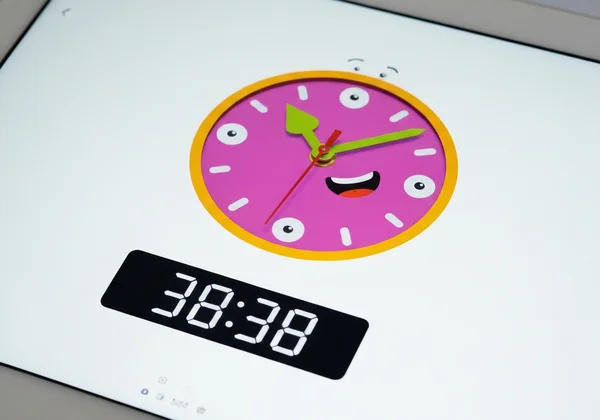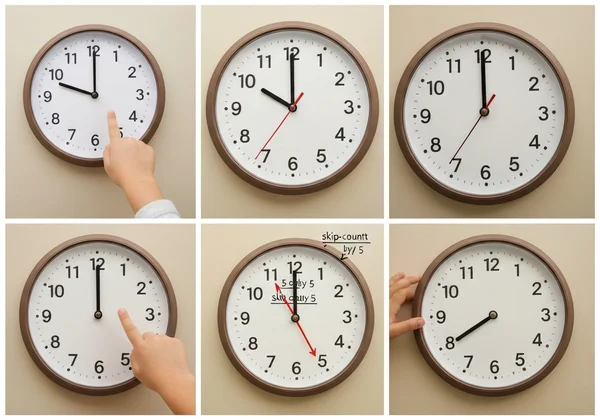Fix Analog Clock Struggles: Your Child's Ultimate Guide
Does your child get tangled up trying to read an analog clock? You're certainly not the only one! It's common for kids to mix up the hands, struggle with skip-counting by fives, or scratch their heads at phrases like "quarter to." What if we told you that overcoming these challenges could actually be a fun, exciting journey of discovery?
The journey from confusion to clarity is easier than you think. The key is to transform an abstract concept into a hands-on, playful experience. With the right strategies and tools, like an interactive learning clock, you can empower your child to become a time-telling expert.

Common Analog Clock Struggles: Understanding the Hurdles
Before we jump into solutions, it's crucial to understand exactly where children get stuck. Recognizing these specific pain points allows us to target them effectively. Most difficulties fall into a few common categories that can be overcome with patience and the right approach.
Confusing the Hour and Minute Hands
One of the first and most significant challenges is differentiating between the short hour hand and the long minute hand. A child might correctly identify the number the hour hand is pointing to but read the minute hand as if it were the hour. This is because both hands are moving, and their distinct jobs aren't immediately obvious. The hour and minute hand confusion is a fundamental block that needs to be cleared before any other progress can be made.
Decoding "Past" & "To": The Tricky Language of Time
Telling time isn't just about numbers; it's also about language. Phrases like "half past," "quarter to," and "ten past" are idiomatic and can be very confusing for a literal-minded child. They understand what "10" and "4" mean, but "ten past four" introduces a layer of linguistic complexity that doesn't always click right away. This abstract language barrier often leads to frustration and a feeling that the rules are always changing.
The Skip-Counting Stumbling Block: Minutes by Fives
While the hour hand points directly to a number, the minute hand requires an extra mental step: skip-counting by fives. A child might see the minute hand on the "3" and say the time is "4:03" instead of "4:15." This skip counting hurdle is a mathematical concept layered on top of the spatial reasoning of reading the clock. Without a firm grasp of counting by fives, reading an analog clock accurately is nearly impossible.
Lack of Interest or Motivation to Learn Time
In a world filled with digital displays on phones, tablets, and microwaves, the analog clock can seem like an ancient relic to a child. If they don't see the relevance or find the learning process engaging, their motivation plummet. A boring worksheet can't compete with a vibrant video game. This lack of interest is a powerful obstacle because, without engagement, even the best explanations can fall on deaf ears.
Practical Solutions & Strategies: Overcoming Telling Time Problems
Now that we've identified the hurdles, let's focus on the solutions. The best strategies are practical, engaging, and build confidence one step at a time. The goal is to make learning feel less like a chore and more like a game. This is where modern tools and timeless teaching techniques come together.
Interactive Clocks: The Fun Way to Learn and Practice
Static images in a book are helpful, but nothing beats hands-on experience. An interactive clock is a game-changer because it allows children to take control. They can physically move the hands and see the digital time change in real-time, creating a powerful cause-and-effect connection.
Our free interactive clock tool is designed to solve these exact problems. Your child can drag the blue hour hand and the red minute hand to see how they relate. Want to practice minutes? Lock the hour hand and focus only on the minute hand. Ready for a challenge? Use the "Random Time" button for a pop quiz, and then "Hide Digital Time" to test their knowledge. This makes telling time games a core part of the learning process.

Visual Aids & Consistent Explanations for Clarity
To tackle hand confusion, create clear visual cues. You can color-code the hands on a physical clock or consistently refer to them by their features: "the short hour hand" and "the long minute hand." When explaining, use simple, consistent language.
For example: "The short blue hand tells us the hour. It moves slowly. The long red hand tells us the minutes. It moves faster." This direct and repetitive explanation, combined with a visual tool like our educational clock, helps solidify the concept in a child's mind.
Step-by-Step Practice: Building Confidence Gradually
Don't try to teach everything at once. Build skills incrementally to foster confidence.
-
Master the Hour: Start by focusing only on the hour hand. Use a learning clock to set times exactly on the hour (e.g., 3:00, 5:00) and have your child identify them.
-
Introduce the Minutes: Once they're confident with hours, introduce the minute hand and the concept of skip-counting by fives. Practice this skill separately until they are comfortable.
-
Combine Them: Finally, put it all together. Start with easier times (like 3:15 and 3:30) before moving to more complex ones (like 3:47). The ability to practice telling time online allows for endless repetition without pressure.

Beyond the Basics: Fostering a Love for Time Management
Mastering an analog clock is more than just an academic skill; it's a child's first step toward understanding and managing their own time. This practical life skill builds a foundation for responsibility, planning, and independence.
Connecting Time to Daily Life & Routines
Make time relevant. Use the analog clock to signal fun parts of the day. "When the long hand gets to the 6, it will be 7:30, and that's when we read a bedtime story!" or "We leave for the park when the short hand is on the 10." This connects the abstract circles and lines on the clock to tangible, enjoyable events in their life, giving them a powerful reason to learn. This real-world application is key to long-term motivation.
Patience, Encouragement, and Positive Reinforcement
Learning to tell time is a marathon, not a sprint. Every child learns at their own pace. Celebrate small victories, like correctly identifying the hour or remembering to count by fives. Use encouraging words and avoid showing frustration. A positive and supportive learning environment is the most important tool you have. When they feel successful, they'll be more eager to continue their learning journey.

Ready to Conquer Time-Telling Challenges with Your Child?
Ready to transform time-telling struggles into triumphs? Empowering your child with analog clock skills is simpler and more fun than you think. The key is hands-on exploration, relevant daily connections, and a pressure-free learning environment.
Are you ready to give your child the confidence to master time? The perfect practice playground is just a click away. Visit our fun clock playground and watch as your child starts to explore, play, and learn.
Your Top Questions About Teaching Analog Time
What age should a child be able to read an analog clock?
While curricula vary, most children begin learning to tell time between the ages of 6 and 8, typically in first or second grade. They usually master telling time to the hour and half-hour first, progressing to the minute by age 8. However, every child is different, so it's important to follow their individual pace.
How do you explain the hour and minute hand to a child effectively?
Use simple, memorable analogies. You could say the hour hand is like a slow tortoise (short word, short hand, moves slow) and the minute hand is like a fast rabbit (long word, long hand, moves fast). Pairing this with a color-coded, adjustable clock where they can move the hands themselves helps reinforce the difference visually and physically.
Why are analog clocks still important for learning in school?
Analog clocks are excellent tools for teaching concepts beyond just telling time. They help children visualize the passage of time, understand fractions (quarters and halves), and develop spatial reasoning and critical thinking skills. This visual representation of time is something a digital display cannot offer.
Are analog clocks better for learning than digital ones?
For learning the concept of time, yes. Analog clocks provide a visual model of time's cyclical nature and the relationship between hours and minutes. While digital clocks are easier to read, they don't teach the underlying structure of time. Learning on an analog clock first provides a much deeper understanding.
How can I make learning to tell time more engaging for my child?
Turn it into a game! Use an interactive tool to set "mystery times" for them to solve. Create a scavenger hunt where they have to be at a certain place at a time you show on the clock. The more you can move away from flashcards and toward active, playful learning on a telling time game tool, the more engaged your child will be.